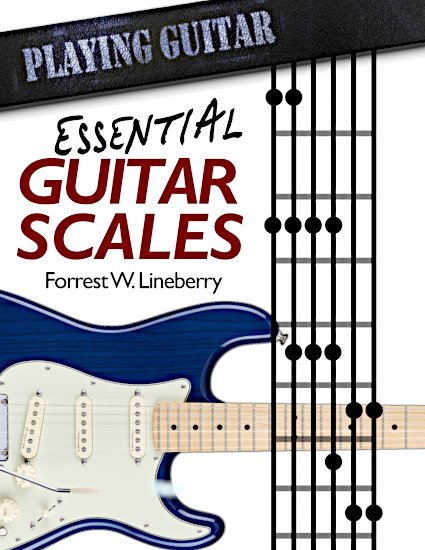Position Playing
While the 3nps system is focused on the symmetrical nature of the scale shapes and moving the hand at the top of each pattern to keep the shapes consistent. Position playing is based around the principle of being able to play any scale or arpeggio from any root note in any position without moving the hand regardless of how awkward some of the fingerings become.
Position playing starts with each of the the four fingers covering one adjacent fret. Any note that needs to be played on that fret is handled by the assigned finger:

Fingers 2 and 3 are stationary. They anchor the hand to the fretboard position. Fingers 1 and 4 are mobile. They stretch down a fret and up a fret as needed to cover any notes that fall outside of the base four-fret area:

Once you learn to cover the frets in this manner, the entire chromatic scale can be played over two and a half octaves, anywhere on the fretboard, without moving the hand out of position. This gives you access to any scale or arpeggio from any root note regardless of where you place your hand on the fretboard:
Like 3nps, position playing is not anchored to chord shapes. While there is a direct one-to-one relationship between some of the shapes and the CAGED chords, this is more a byproduct than the actual aim of the system. You might notice that each of the CAGED+ fingerings are represented in the following diagrams:












Position playing is most closely associated with the Berklee College of music and the curriculum developed by former Chair of the guitar department, William Leavitt. You’ll see people refer to this system as the Berklee patterns or the Leavitt patterns. The major advantage of this approach is that no matter where you place your hand on the fretboard you can play arpeggios and scales in any key. This makes the system very well-suited for players who are involved with sight reading sheet music or playing styles of music that require multiple, quick key changes.The major disadvantage of this system is that many players find the stretches difficult or impossible. The sheer amount of work it takes to really master this approach can be daunting, as well.

Book Title
Essential Guitar Scales
The scales you need, how to learn them, how to practice them, how to USE them.
Sell Link
Coming in early 2020!
Sample Chapter Links
Sample Chapters

